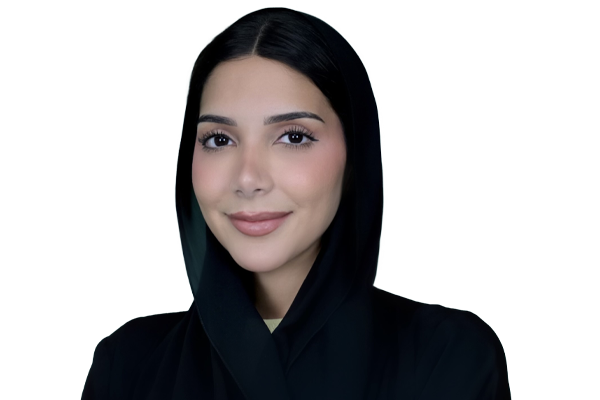In recent years, the rise of deepfake technology and other forms of AI-generated media has sparked significant concern regarding their implications for truth, trust, and the integrity of information. As the sophistication of these technologies continues to evolve, deepfakes—hyper-realistic manipulations of video and audio content—are becoming increasingly difficult to distinguish from genuine media. This insight delves into the technical mechanisms that underpin the creation of such synthetic media, examining how advancements in machine learning and neural networks have enabled the production of remarkably convincing content. However, with these advancements come profound challenges, particularly in the realms of misinformation and disinformation. The ability of individuals and organizations to create and disseminate misleading content poses a direct threat to public perception, creating an environment where the lines between fact and fiction are dangerously blurred. This analysis will explore the pervasive impact of AI-generated media on societal trust and the ways in which it contributes to the spread of false narratives. Furthermore, it will highlight the emerging tools and strategies designed to detect and combat these technologies, emphasizing the urgent need for effective solutions in an era where digital media can be altered with alarming ease. Through a comprehensive analysis of the sophistication of deepfakes and the challenges they present, this insight aims to shed light on the problems posed by AI-generated content and contribute to ongoing discussions about safeguarding the authenticity of information in the digital age.
The Sophistication of Deepfakes and AI-Generated Media
How are deepfakes and voice cloning technologies evolving?
The evolution of deepfake and voice cloning technologies is revolutionizing numerous domains, most notably the film and entertainment industry. Filmmakers are leveraging deepfake technology to recreate classic scenes featuring long-dead actors, effectively bringing history to life and creating new cinematic experiences without the constraints of time and mortality.[1] This capability extends to updating film footage without the need for expensive reshoots, thereby enhancing production efficiency and reducing costs.[2] Furthermore, deepfake technology is being employed to generate digital voices for actors who have lost theirs due to illness, providing them with a means to continue their craft.[3] These advancements are not just limited to entertainment; they have practical applications in multilingual campaigns, as demonstrated by the 2019 global malaria awareness campaign that featured a digitally altered David Beckham, which helped bridge language barriers to reach a wider audience.[4] The rapid progress in these technologies is, however, a double-edged sword. While they offer unprecedented creative and communicative opportunities, they also necessitate robust safeguards to prevent misuse in disinformation campaigns, fraud, and other deceptive practices.[5] Therefore, the continued evolution of deepfake and voice cloning technologies must be accompanied by the development of advanced detection mechanisms to ensure their ethical and secure applications.
What are the technical mechanisms behind creating realistic synthetic media?
The technical mechanisms behind creating realistic synthetic media, particularly deepfakes, are multifaceted and heavily reliant on sophisticated generative models. The development of these models often requires substantial resources and advanced skills, particularly when a novel synthesis model is created, indicating a high level of expertise among deepfake creators.[6] Attribution methods, which are critical for identifying the origins of synthetic media, frequently employ multi-class classification techniques to differentiate between deepfakes generated by various AI models.[7] This classification process can be invaluable in forensic investigations, as it allows experts to infer the type and details of the generation model used, aiding in the identification of the perpetrators behind deepfake attacks.[8] Furthermore, the specific characteristics of the synthesis model, whether it is an original creation or a modified version of a publicly available tool, can significantly impact the scope of forensic investigations. For instance, if the model is a slightly modified version of a known tool, it suggests that the creator possesses the technical skills to alter existing technologies, which can narrow down the list of potential suspects.[9] Conversely, if the model is a direct copy of a publicly available tool, investigators can focus on tracing the distribution of that tool to identify the users who downloaded it.[10] These technical mechanisms not only enhance the realism of synthetic media but also provide critical pathways for detection and attribution, underscoring the need for continuous advancements in forensic methodologies to keep pace with evolving deepfake technologies.
What recent advancements have made AI-generated content more convincing?
The recent advancements in artificial intelligence have profoundly enhanced the quality and realism of AI-generated content, making it increasingly difficult to discern between genuine and synthetic media. One of the most significant breakthroughs has been the development of generative adversarial networks (GANs), which consist of two neural networks competing against each other to create increasingly realistic outputs.[11] [12] This adversarial process has led to the generation of highly convincing images and videos, known as deepfakes, which pose serious ethical and security challenges due to their potential misuse.[13] Additionally, advancements in deep neural networks and variational auto-encoder models (VAEs) have further contributed to the rise of synthetic media by enabling more sophisticated manipulation and generation of content.[14] [15] These technological strides have collectively resulted in synthetic media that is nearly indistinguishable from real-life content, complicating efforts to verify authenticity.[16] The implications of these advancements extend beyond mere entertainment and digital art; they impact domains such as journalism, cybersecurity, and personal privacy, necessitating the development of more robust detection and verification techniques to mitigate the risks associated with AI-generated content.[17]
Challenges of Misinformation and Disinformation
In what ways are deepfakes contributing to the spread of misinformation?
The proliferation of deepfakes significantly contributes to the spread of misinformation by leveraging artificial intelligence to create highly convincing doctored videos, audios, or photos that can easily mislead viewers.[18] Since their inception in 2017, the rapid evolution of tools and algorithms has enabled even average users to manipulate audiovisual content, making it increasingly accessible and dangerous.[19] This ease of production and dissemination exacerbates the misinformation problem, as deepfakes can be widely and swiftly distributed through online news platforms and social media spaces, amplifying their potential to misinform the public.[20] The consequences are far-reaching, posing threats not only to individuals but also to societies and democratic processes, as deepfakes can mislead and manipulate public opinion, disrupt political processes, and undermine public discourse.[21] Moreover, deepfakes can lead to election interference, further spreading misinformation during critical democratic events and undermining the integrity of democratic systems.[22] [23] These multifaceted dangers highlight the urgent need for promoting media literacy and critical thinking to mitigate the negative impacts of deepfakes and prevent their role in the spread of misinformation.[24] [25]
How are AI-generated media affecting public perception and trust?
The proliferation of AI-generated media has far-reaching implications for public perception and trust, particularly in the realm of information dissemination. One significant concern is the potential for AI-generated content to flood communication channels, thereby overwhelming real users with synthetic data and complicating the process of distinguishing authentic information from fabricated narratives.[26] This inundation can contribute to an “infodemic,” where the sheer volume of content, much of it of unstable quality, makes it increasingly difficult for the public to access essential and high-quality information.[27] Platforms that prioritize knowledge sharing, such as Stack Overflow, have even implemented temporary bans on AI-generated content to maintain content quality and public trust.[28] Furthermore, the customization capabilities of AI-generated media allow it to target specific communities or perspectives, potentially skewing public trust and perception of information by presenting biased or misleading viewpoints.[29] This ability to tailor content for particular audiences can manipulate belief systems and exacerbate societal divides. Additionally, the ethical implications of AI-generated content cannot be ignored, as the potential for misuse raises significant concerns about the integrity and reliability of information sources.[30] To mitigate these challenges, there is a pressing need for improved media literacy and awareness initiatives that empower users to critically evaluate the information they encounter and foster a more discerning and informed public.[31]
What emerging tools and strategies are being developed to detect and combat deepfakes?
As deepfake technology becomes more sophisticated, the need for robust detection methods has intensified, leading to the development of various innovative tools and strategies. One of the primary methods includes multimedia forensics, which scrutinizes inconsistencies within the media files themselves, such as anomalies in lighting, shadows, and reflections that are often overlooked by deepfake algorithms.[32] Another promising approach involves convolutional neural networks (CNNs), which utilize machine learning to identify subtle cues of manipulation that humans might miss.[33] These techniques are crucial, especially considering the evolving capabilities of deepfake developers who continuously refine their technology to evade detection systems.[34] The challenge is exacerbated by the vast amount of content uploaded online daily, necessitating scalable solutions to authenticate content and identify fakes.[35] This growing disparity in resources underscores the importance of increasing investment in detection research to keep pace with the rapid advancements in deepfake creation.[36] Addressing these issues requires a multifaceted approach, combining technological innovation with strategic policies and collaborative efforts among cybersecurity firms and social media platforms to mitigate the spread and impact of deepfakes.
The findings presented in this insight highlight the transformative potential of deepfake and voice cloning technologies within the film and entertainment industry while simultaneously unveiling significant ethical and security dilemmas that accompany their use. As filmmakers increasingly utilize these tools to create immersive experiences, such as resurrecting performances from deceased actors or providing a voice to those who have lost it, we must critically assess the implications of blurring the lines between reality and artificiality. The sophisticated mechanisms behind deepfake creation, particularly through advanced generative models and convolutional neural networks (CNNs), underscore the need for equally sophisticated detection methods to combat potential misuse in disinformation campaigns, fraud, and election interference. This duality of creation and detection reveals a growing disparity in resources that calls for urgent investment in research and development of detection technologies. Such efforts are essential to safeguard the integrity of democratic processes, where the manipulation of media can lead to widespread misinformation and societal distrust. Moreover, the classification methods used to trace the origins of synthetic media serve as vital tools in forensic investigations, aiding in the identification of malicious actors who exploit these technologies. However, the ongoing evolution of deepfake capabilities, driven by skilled creators who continually refine their techniques to evade detection, presents a formidable challenge to these efforts. Future research must not only focus on enhancing detection mechanisms but also on establishing strategic policies that foster collaboration between cybersecurity firms and social media platforms. By addressing these multifaceted challenges holistically, the academic community can contribute to a more informed dialogue on the ethical implications of AI-generated media and strive towards a framework that balances innovation with responsibility.
[1] Westerlund, M., “The Emergence of Deepfake Technology: A Review,” TIM Review, November 2019, timreview.ca/article/1282, retrieved September 1, 2024.
[2] Ibid.
[3] Ibid.
[4] Ibid.
[5] George, Shaji, A. and George, Hovan, A.S., “Deepfakes: The Evolution of Hyper realistic Media Manipulation,” Partners Universal Innovative Research Publication (PUIRP) 1, no. 02 (2023), www.puirp.com/index.php/research/article/view/19., retrieved September 1, 2024.
[6] Lyu, S., “DeepFake the menace: mitigating the negative impacts of AI-generated content,” Organizational Cybersecurity Journal: Practice, Process and People (2024), www.emerald.com., retrieved September 1, 2024.
[7] Ibid.
[8] Ibid.
[9] Ibid.
[10] Ibid.
[11] Whittaker, L., Kietzmann, T. and Kietzmann, J. and Dabirian, A., “All Around Me Are Synthetic Faces”: The Mad World of AI-Generated Media,” IT Professional 22, no. 5 (September-October 2020), ieeexplore.ieee.org/abstract/document/9194439/., retrieved September 2, 2024.
[12] Lyu, S., “DeepFake the menace: mitigating the negative impacts of AI-generated content,” op. cit.
[13] Whittaker, L., Kietzmann, T., Kietzmann, J. and Dabirian, A., “All Around Me Are Synthetic Faces”: The Mad World of AI-Generated Media,” op. cit.
[14] Ibid.
[15] Lyu, S., “DeepFake the menace: mitigating the negative impacts of AI-generated content,” op. cit.
[16] Whittaker, L., Kietzmann, T., Kietzmann, J. and Dabirian, A., “All Around Me Are Synthetic Faces”: The Mad World of AI-Generated Media,” op. cit.
[17] Ibid.
[18] Vizoso, Á., Vaz-Alvarez, M. and Lopez-Garcia, X., “Fighting Deepfakes: Media and Internet Giants’ Converging and Diverging Strategies against Hi-Tech Misinformation,” Media and Communication 9, no. 1 (2021), www.cogitatiopress.com., retrieved September 4, 2024.
[19] Ibid.
[20] Ibid.
[21] Van der Sloot, B. and Wagensveld, Y., “Deepfakes: regulatory challenges for the synthetic society,” Computer Law & Security Review 45 (September 2022), www.sciencedirect.com/science/article/pii/S0267364922000632., retrieved September 4, 2024.
[22] Ibid.
[23] Kopecky, S., “Challenges of Deepfakes,” in Arai, K. (eds) Intelligent Computing (2024), link.springer.com/chapter/10.1007/978-3-031-62281-6_11., retrieved September 4, 2024.
[24] Van der Sloot, B. and Wagensveld, Y., “Deepfakes: regulatory challenges for the synthetic society,” op. cit.
[25] Kopecky, S., “Challenges of Deepfakes,” op. cit.
[26] Zhou, J., Zhang, Y., Luo, Q., Parker, A. and Choudhry, M. De, “Synthetic Lies: Understanding AI-Generated Misinformation and Evaluating Algorithmic and Human Solutions,” CHI, 2023, dl.acm.org/doi/abs/10.1145/3544548.3581318., retrieved September 4, 2024.
[27] Ibid.
[28] Ibid.
[29] Ibid.
[30] Labajová, L., “The state of AI: Exploring the perceptions, credibility, and trustworthiness of the users towards AI-Generated Content,” DiVA, 2023, www.diva-portal.org/smash/record.jsf?pid=diva2:1772553., retrieved September 4, 2024.
[31] Ibid.
[32] Albahar, M., Almalki, J., “Deepfakes: Threats and Countermeasures Systematic Review,” Journal of Theoretical and Applied Information Technology 97, no. 22 (2005), www.jatit.org/volumes/Vol97No22/7Vol97No22.pdf., retrieved September 4, 2024.
[33] Ibid.
[34] Westerlund, M., “The Emergence of Deepfake Technology: A Review,” op. cit.
[35] Ibid.
[36] Ibid.








